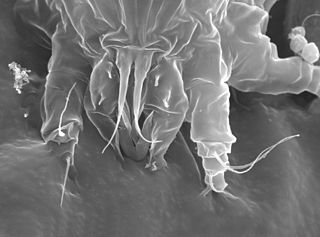
Lygodium is a genus of about 40 species of ferns, native to tropical regions across the world, with a few temperate species in eastern Asia and eastern North America. It is the sole genus in the family Lygodiaceae in the Pteridophyte Phylogeny Group classification of 2016. Alternatively, the genus may be placed as the only genus in the subfamily Lygodioideae of a more broadly defined family Schizaeaceae, the family placement used in Plants of the World Online as of November 2019. Per recent molecular evidence, Lygodiaceae is thought to have diverged relatively early from the other members of the Schizaeales due to the relatively high level of synonymous sequence divergence between the families within the Schizaeales.

The Arthur R. Marshall Loxahatchee National Wildlife Refuge is a 145,188-acre (587.55 km2) wildlife sanctuary is located west of Boynton Beach, in Palm Beach County, Florida. It is also known as Water Conservation Area 1 (WCA-1). It includes the most northern remnant of the historic Everglades wetland ecosystem.

The greater mouse-tailed bat is a species of bat in the Rhinopomatidae family.

Lygodium microphyllum is a climbing fern originating in tropical Africa, Southeast Asia, Melanesia and Australia. It is an invasive weed in Florida where it invades open forest and wetland areas. The type specimen was collected in the vicinity of Nabúa, on the island of Luzon in the Philippines by Luis Née.

Lygodium palmatum is the only species of its genus native to North America. Unlike most species in the genus, this one, called the American climbing fern, Hartford fern, or Alice's fern, is extremely hardy in temperate zones .The name "Hartford Fern" being derived from its former prevalence in Hartford and the surrounding Connecticut area. It was extensively used as a Christmas decoration by early settlers, leading to the first law protecting a plant species in the United States in 1869.

Floracarus perrepae is a species of herbivorous mite belonging to the family Eriophyidae. It is native to Australia (Queensland), China and New Caledonia. As it is known to attack and eat the invasive fern species Lygodium microphyllum, it is being considered for use as a biological pest control agent in Florida.

Austromusotima camptozonale, the climbing maidhair pyralid moth, is a moth of the family Crambidae. It is native to Australia, but attempts have been made to introduce it to southern Florida as a biological control agent for Old World climbing fern.
Lygomusotima is a genus of moths of the family Crambidae.
Siamusotima is a genus of moths of the family Crambidae. The genus was erected by Maria Alma Solis et al. in 2005.
Austromusotima metastictalis is a moth of the family Crambidae. It is found in New Guinea and possibly also in northern Queensland in Australia.
Actinostachys pennula, the ray spiked fern or tropical curly-grass, is a fern native mainly to Southern Florida and is an endangered plant species.
Musotiminae is a subfamily of the lepidopteran family Crambidae. It was described by Edward Meyrick in 1884
Lygomusotima constricta is a moth in the family Crambidae. It was described by Maria Alma Solis and Shen-Horn Yen in 2004. It is found in the Philippines (Luzon).
Neomusotima conspurcatalis is a moth in the family Crambidae. It was described by William Warren in 1896. It is found in India, Indonesia, East Timor and Australia.

Neomusotima fuscolinealis is a moth in the family Crambidae. It was described by Yoshiyasu in 1985. It is found in Japan and Hong Kong. The species was studies as a potential biological control agent for Lygodium japonicum in the United States, but the species was deemed unsuitable since it also fed on the native species Lygodium palmatum.

Siamusotima aranea is a species of moth of the family Crambidae first described by Maria Alma Solis et al. in 2005.

Lygodium articulatum, commonly referred to as mangemange or Bushman's mattress, is a fern endemic to the North Island forests of New Zealand. Mangemange is an endemic species and is unique compared to other ferns in the area due to the vine–like curtain it creates in the canopy. Although the majority of the plant is found in the canopy of the surrounding forest, the roots and stem of mangemange form on the ground, meaning it cannot be classified as an epiphyte.
Siamusotima disrupta is a species of stem-boring moth of the family Crambidae first described by Maria Alma Solis et al. in 2017.









